 The Digital Markets Act (DMA) outlines a new regulatory approach that the European Commission (EC) is taking to address concerns over the lack of competition in digital platform markets. The DMA complements existing European Union competition law and officially came into force on 1st November 2022.
The Digital Markets Act (DMA) outlines a new regulatory approach that the European Commission (EC) is taking to address concerns over the lack of competition in digital platform markets. The DMA complements existing European Union competition law and officially came into force on 1st November 2022.
In the first stage of this new regulatory approach, the EC identified ten core platform services (CPS). Examples include search engines, online social networking services, video sharing services, cloud computing services, web browsers and operating systems. These services act as important gateways for large numbers of businesses and consumers to interact with one another. They also have some important economic characteristics, such as large economies of scale and very strong network effects.
The next stage of the regulatory process was to assess which of the large established businesses should be designated as ‘gatekeepers’ of these CPS. To be judged as a gatekeeper, a business had to meet three qualitative criteria. Using quantitative thresholds as a guide to see if these qualitative criteria had been met, the following six companies were designated as gatekeepers by the EC in September 2023: Alphabet (Google’s parent company), Amazon, Apple, ByteDance (owner of TikTok), Meta (owner of Facebook) and Microsoft. Individual companies can be gatekeeper for more than one CPS. For example, Apple was judged to be a gatekeeper for both web browsers (Safari) and operating systems (iOS and iPadOS).
Rules and compliance
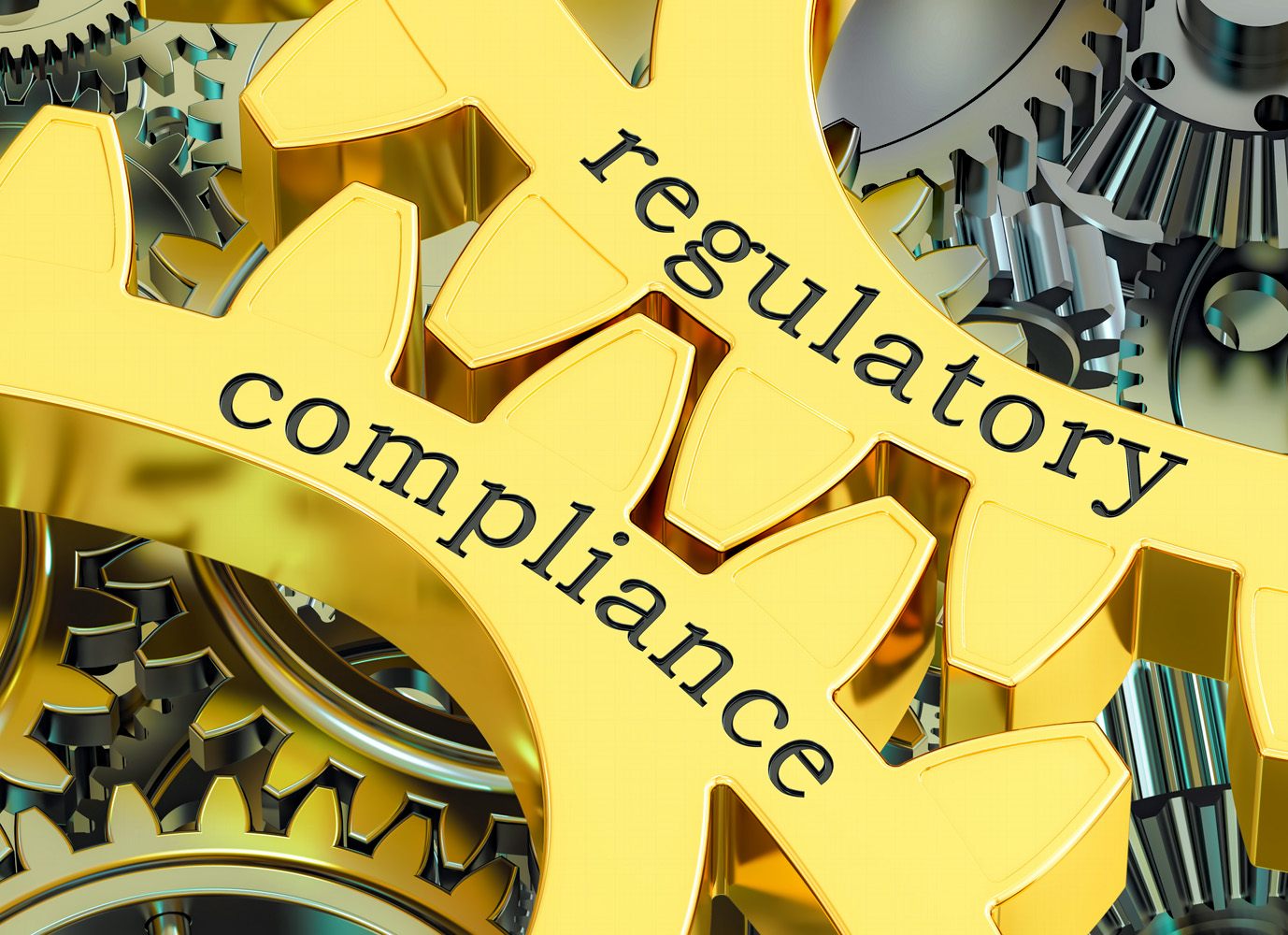 Once a business has been designated as a gatekeeper for one or more CPS, the DMA imposes a set of rules on its future conduct. Some of these rules refer to conduct that the business must follow, while others refer to types of behaviour that are prohibited. The EC sometimes refer to these rules as a list of “do’s” and “don’ts”.
Once a business has been designated as a gatekeeper for one or more CPS, the DMA imposes a set of rules on its future conduct. Some of these rules refer to conduct that the business must follow, while others refer to types of behaviour that are prohibited. The EC sometimes refer to these rules as a list of “do’s” and “don’ts”.
One of the rules refers to interoperability. This is the degree to which different (a) software, (b) devices and (c) other applications can work seamlessly together (i.e. share functionality/data) without requiring any actions by the user (i.e. how compatible they are with one another).
For example, consider the degree of interoperability between the operating system of a gatekeeper, such as Apple, and other hardware/software services. One of the requirements of the DMA is for the gatekeeper to provide the same degree of interoperability for the hardware/software services provided by rival businesses as they do for similar hardware/software services they supply. This is sometimes referred to as the interoperability obligation.
Once a business is designated as a gatekeeper, it has 6 months to submit a compliance report to the EC that demonstrates how it is meeting the rules set out in the DMA. This should include descriptions of any changes the company has had to make to its conduct to meet the new requirements. Further compliance reports must then be submitted on an annual basis.
If, after assessing a compliance report, the EC suspects that a gatekeeper is still acting in ways that do not comply with the DMA, then it can launch either a non-compliance or specification procedure.
The case of Apple
 Apple submitted its first compliance report on 7 March 2024. It was far less extensive than those completed by other designated gatekeepers and adopted a very different tone: it directly challenged the EC’s view that the DMA rules would have a positive impact on consumer welfare.
Apple submitted its first compliance report on 7 March 2024. It was far less extensive than those completed by other designated gatekeepers and adopted a very different tone: it directly challenged the EC’s view that the DMA rules would have a positive impact on consumer welfare.
In September 2024, the EC launched its first two specification proceedings that focused on Apple’s compliance with the interoperability obligation.
The first of these proceedings opened a formal discussion with Apple over the interoperability between the iPhone operating system (iOS) and connected devices such as smartwatches and headphones. The proceeding identified nine features that gave the iOS greater functional compatibility with connected devices produced by Apple than with those made by other businesses. For example:
- Only users of connected devices produced by Apple can (a) receive iOS notifications that contain images or other attachments and (b) select the iOS notifications they want to appear on the device.
- Only users of Apple’s wireless headphones have intelligent audio switching functionality that allows them to switch automatically to the device playing the most relevant audio.
- The Airdrop function, which enables users to share files wirelessly between devices, only works if they are both produced by Apple.
- Only connected devices made by Apple have the functionality for high-bandwidth data transfer from an iPhone without having to rely on network or cellular connection. This is useful for gaming and AI services.
The second specification proceeding focused on the process developed by Apple to deal with requests from other businesses that wanted to develop hardware or software services that are compatible with the iOS.
On 18th December 2024, the EC informed Apple of its preliminary specification decisions and opened a consultation exercise with other interested parties about the suitability of its proposals. Once this process was completed, the EC informed Apple of its final specification decisions on 19 March 2025.
The EC’s decisions
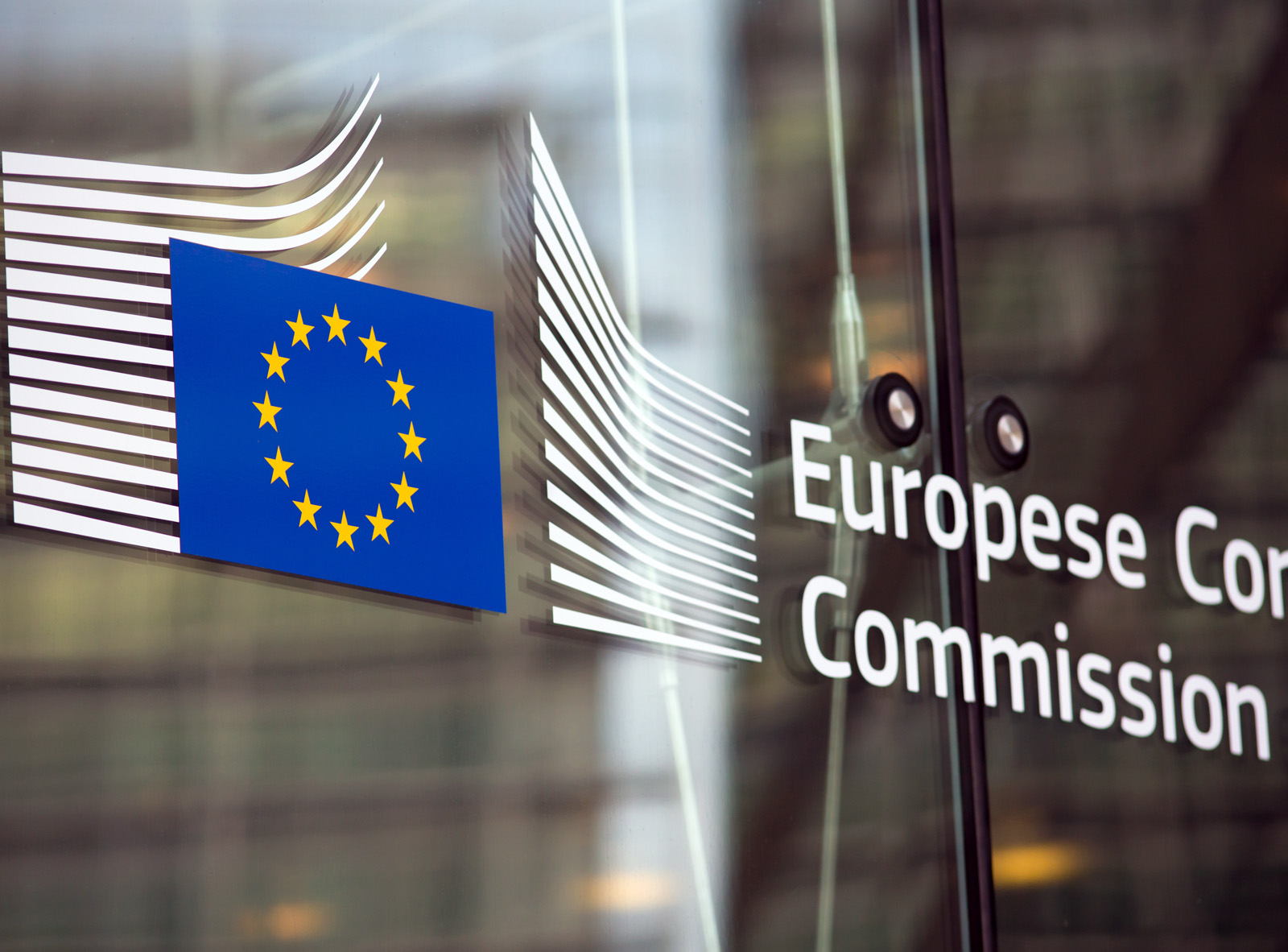 The first decision included a set of measures that Apple must take to improve the interoperability of connected devices produced by other businesses with the iOS. The EC stated that:
The first decision included a set of measures that Apple must take to improve the interoperability of connected devices produced by other businesses with the iOS. The EC stated that:
The interoperability solutions for third parties will have to be equally effective to those available to Apple and must not require more cumbersome system setting or additional user friction.
The second decision outlined measures that Apple had to take to improve the process of dealing with requests for greater compatibility with the iOS. For example, it should provide outside businesses with more (a) access to technical documentation, (b) predictable timelines for the reviews and (c) timely updates.
Apple argued that being forced to introduce these measures will (a) create significant additional costs, (b) limit its ability to develop products that work seamlessly with one another and (c) lead to its having to share sensitive customer information with its rivals.
On 30th May 2025, Apple filed an appeal against the EC’s specification decisions to the General Court of the European Union. It will be interesting to see what judgment is made on this case by the General Court and the implications this has for the enforcement of the DMA.
Video
Articles
- The EU Digital Markets Act – The Holy Grail of Big Tech Regulation?
Morrison & Foerster, Andreas Grünwald, Christoph Nüßing and Theresa Oehm (19/7/22)
- Commission starts first proceedings to specify Apple’s interoperability obligations under the Digital Markets Act
EC Press Release (19/9/24)
- Apple hits out at Meta’s numerous interoperability requests
Reuters, Foo Yun Chee (19/12/24)
- 1st Anniversary of the Digital Markets Act (DMA): Lessons learned and road ahead
Hausfeld Competition Bulletin, Ann-Christin Richter and René Galle (28/3/25)
- EU accuses Google and Apple of breaking its rules, risking Trump clash
The Guardian, Rob Davies and Dan Milmo (19/3/25)
- Brussels takes action against Google and Apple despite Trump threat
Financial Times, Barbara Moens (19/3/25)
- Brussels Takes Action Against Google And Apple Despite Trump Threat
GNC (19/3/25)
- Commission provides guidance under Digital Markets Act to facilitate development of innovative products on Apple’s platforms
EC Press Release (19/3/25)
- European Commission Fines Both Apple, Meta For DMA Breaches
Silicon UK, Tom Jowitt (23/4/25)
- Apple Appeals European Commission Order on Interoperability With Competitors’ Products
PYMNTS (2/6/25)
- https://dig.watch/updates/apple-sues-european-commission-over-dma-interoperability-ruling
The Digital Watch (6/6/25)
- Meta, Apple Launch Legal Challenges to EU DMA Rulings
PYMNTS (3/6/25)
Questions
- Identifying core platform services is similar to defining relevant markets in standard competition policy but takes a more legalistic approach. Discuss some of the problems of defining a relevant market for a digital platform.
- Outline the three qualitative criteria and the quantitative thresholds that are used by the EC to designate a digital platform as a gatekeeper of a core platform service.
- Find an example of a digital platform that met the quantitative thresholds but did not meet the qualitative criteria and so was not designated as a gatekeeper.
- Find an example of a digital platform that did not meet the quantitative thresholds but did meet the qualitative criteria and so was designated as a gatekeeper.
- Interoperability is a type of conduct that is sometimes referred to as self-preferencing: i.e. behaviour by a digital platform that gives its own products/services preferential treatment over those provided by other firms that use the same platform. What other types of conduct are possible examples of self-preferencing?
- What is the difference between a non-compliance procedure and a specification procedure? Find some recent examples of non-compliance procedures that have been undertaken by the EC to enforce the DMA.
- What are the potential advantages and disadvantages for consumer welfare of the specification decisions made by the EC?
 In September 2023, UK mobile phone network operators Vodafone and Three (owned by CK Hutchinson) announced their intention to merge. At the time, in terms of total revenue from the supply of mobile phone services to consumers, Vodafone and Three had market shares of 23% and 12%, respectively.
In September 2023, UK mobile phone network operators Vodafone and Three (owned by CK Hutchinson) announced their intention to merge. At the time, in terms of total revenue from the supply of mobile phone services to consumers, Vodafone and Three had market shares of 23% and 12%, respectively.
In addition to Vodaphone and Three, there are two other major network operators – the BT Group (BT & EE) and Virgin-media 02, with market shares of around 31% and 23%, respectively, with other operators having a combined market share of 12%. As we shall see below, these other operators use one of the four major networks. Therefore, the merged entity of Vodafone-Three would become the market leader with a share of around 35% and there would only be three major network operators competing in the UK.
Not surprisingly, the UK competition agency, the Competition and Markets Authority (CMA), decided to conduct a detailed investigation into whether the merger would harm competition. However, in early December 2024 the CMA announced its decision to allow the merger to go ahead, subject to several important commitments by the merging parties.
CMA’s phase 1 findings
 The CMAs phase 1 investigation raised several concerns with the merger (see fifth CMA link below).
The CMAs phase 1 investigation raised several concerns with the merger (see fifth CMA link below).
First, it was worried that retail and business customers would have to pay higher prices for mobile services after the merger.
Second, in addition to the four mobile network operators, the UK market is served by a number of mobile ‘virtual’ network operators (MVNOs), for example Sky Mobile and Lyca Mobile. As we saw above, these suppliers account for around 12% of the consumer retail market. The MVNOs do not own their own networks and instead agree wholesale terms with one of the network operators to access their network and supply their own retail mobile services. The CMA was concerned that since the merger would reduce the number of networks competing to host these MVNOs from four to three, it would result in MVNOs paying higher wholesale access prices.
Vodafone and Three did not offer any remedies to the CMA to address these competition concerns. Consequently, the CMA referred the case to phase 2 for a more thorough investigation.
CMA’s phase 2 findings
The CMA’s analysis in phase 2 confirmed its earlier concerns (see linked report below). It was still worried that because the merged entity would become the largest network operator, retail customers would face higher prices or get a poorer service – for example, a reduced data allowance in their contract. In addition, the CMA remained concerned that the MVNOs would be negatively impacted and that this would lessen their ability to offer the best deals to retail customers.
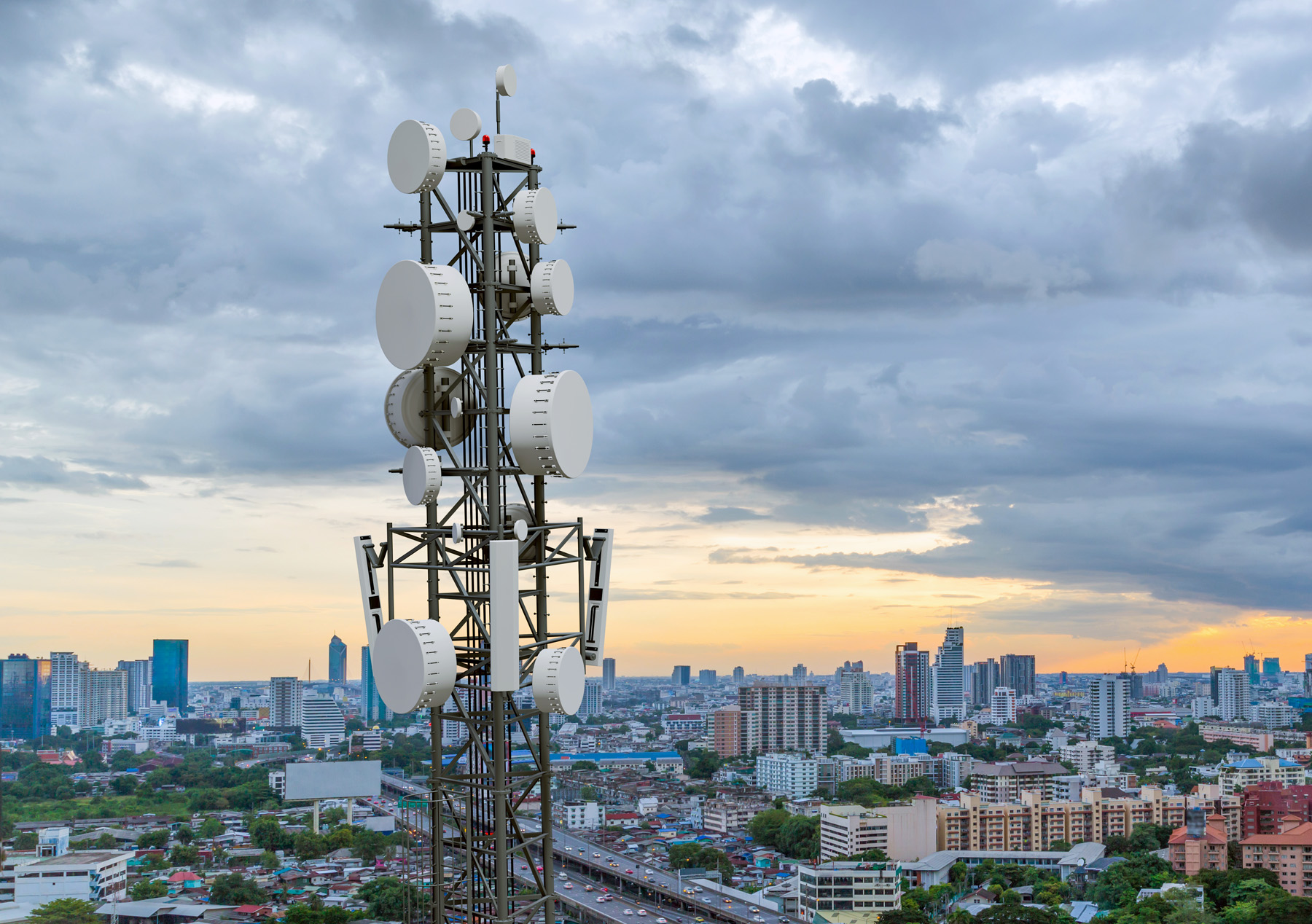 However, during the phase 2 investigation, the merging parties put forward various efficiency justifications for the merger. They argued that the merger would provide them with much needed scale and investment capacity to improve their network and roll-out 5G technology. The CMA recognised these claims but questioned the merging parties’ incentives to go through with the investment once the merger was approved. Furthermore, it was concerned that if they did invest, this would be funded by raising the prices charged to consumers.
However, during the phase 2 investigation, the merging parties put forward various efficiency justifications for the merger. They argued that the merger would provide them with much needed scale and investment capacity to improve their network and roll-out 5G technology. The CMA recognised these claims but questioned the merging parties’ incentives to go through with the investment once the merger was approved. Furthermore, it was concerned that if they did invest, this would be funded by raising the prices charged to consumers.
As a result, the CMA only agreed to allow the merger once Vodafone and Three accepted remedies that would address these concerns.
The remedies necessary for the merger to proceed
First, the merged entity must cap a range of tariffs and data plans it offers in the retail market for three years.
Second, again for three years, it must commit to maintain the wholesale contract terms it offers to MNVOs.
 Finally, over the next eight years, the merged entity must deliver the network upgrade plans that it claimed the merger would allow. The CMA believes that in the long run this network development would significantly boost competition between the three remaining mobile network operators.
Finally, over the next eight years, the merged entity must deliver the network upgrade plans that it claimed the merger would allow. The CMA believes that in the long run this network development would significantly boost competition between the three remaining mobile network operators.
The acceptance of remedies of this nature was unusual for the CMA. Typically, like other competition agencies, the CMA has favoured divestment remedies in which the merging parties are required to sell-off some of the assets or capacity acquired. In contrast, the remedies in the Vodafone-Three deal impact on the merging parties’ behaviour.
One clear disadvantage of such remedies is that they require the merged firm’s actions to be monitored, in this case for eight years, to make sure it adheres to the agreed behaviour. One reason why the CMA may have been willing to accept this is that the communications industries regulator, OFCOM, will be able to assist with this monitoring.
It was also surprising that the CMA was willing to allow the number of network operators to decrease to three. Previously, there had been a perception that it was important to maintain four networks. This was certainly the view in 2016 when Three’s attempted merger with O2 was prohibited. This decision was made by the European Commission (EC). However, the CMA raised serious concerns to the EC and when the merging parties offered behavioural remedies argued that these were:
materially deficient as they will not lead to the creation of a fourth Mobile Network Operator (MNO) capable of competing effectively and in the long-term with the remaining three MNOs such that it would stem the loss of competition caused by the merger.
Why has the authorities’ attitude towards the merger changed?
So why has there been a change of stance in this latest attempted merger in the mobile phone sector?
 One explanation is that the market has fundamentally changed over time. The margins for network operators have declined, network usage has grown and there has been a lack of investment in expensive 5G technology. This would certainly fit with the CMA’s desire to use the remedies to facilitate network investment.
One explanation is that the market has fundamentally changed over time. The margins for network operators have declined, network usage has grown and there has been a lack of investment in expensive 5G technology. This would certainly fit with the CMA’s desire to use the remedies to facilitate network investment.
A second possible explanation is that the CMA has recently faced criticism from UK Prime Minister, Keir Starmer (see third Guardian article below). In a speech at the International Investment Summit in London in October 2024, he said that
We will rip out the bureaucracy that blocks investment and we will make sure that every regulator in this country take growth as seriously as this room does.
In response to this, the CMA has indicated that in 2025 it will review its approach to mergers, ensuring that only truly problematic mergers don’t proceed, and reconsider when behavioural remedies may be appropriate (see final CMA link below).
The CMA’s decision in the Vodafone-Three case certainly demonstrates that it is now willing to accept behavioural remedies when there is a regulator in place to support the subsequent monitoring.
It will be interesting to see how this merger affects competition in the mobile phone market and, more generally, whether the CMA starts to implement behavioural remedies more widely, especially in markets where it would have to do all the subsequent monitoring.
Articles
CMA reports, etc
Questions
- Why is it beneficial to have MVNOs in the market for mobile phone services?
- Why is it important that MVNOs have a choice of mobile networks to supply their retail mobile services?
- How do you think the other mobile network operators will react to the Vodafone-Three merger?
- Compare the relative benefits of blocking a merger with requiring merging companies to adopt certain remedies.
 You may have recently noticed construction workers from different businesses digging up the roads/pavements near where you live. You may also have noticed them laying fibre optic cables. Why has this been happening? Does it make economic sense for different companies to dig up the same stretch of pavement and lay similar cables next to one another?
You may have recently noticed construction workers from different businesses digging up the roads/pavements near where you live. You may also have noticed them laying fibre optic cables. Why has this been happening? Does it make economic sense for different companies to dig up the same stretch of pavement and lay similar cables next to one another?
For many years the UK had one national fixed communication network that was owned by British Telecom (BT) – the traditional phone landline made from copper wire. This is now operated by OpenReach – part of the BT group but a legally separate division. In addition to this national infrastructure, Virgin Media (formed in 2007 from the merged cable operators, Telewest and NTL) has gradually built up a rival fixed broadband network that now covers just over 50 per cent of the country.
Although customers have only had very limited choice over which fixed communication network to use, they have had far greater choice over which Internet service provider (ISP) to sign up for. This has been possible as the industry regulator, Ofcom, forces OpenReach to provide rival ISPs such as Sky Broadband, TalkTalk and Zen with access to its network.
Expansion of the fibre optic network
 Recent government policy has tried to encourage and incentivise the replacement of the copper wire network with one that is fully fibre. This is often referred to as Fibre to the Premises (FTTP) or Fibre to the Home (FTTH). A fixed network of fully fibre broadband enables much faster download speeds and many argue that it is vital for the future competitiveness of the UK economy.
Recent government policy has tried to encourage and incentivise the replacement of the copper wire network with one that is fully fibre. This is often referred to as Fibre to the Premises (FTTP) or Fibre to the Home (FTTH). A fixed network of fully fibre broadband enables much faster download speeds and many argue that it is vital for the future competitiveness of the UK economy.
Replacing the existing fixed communication network with fibre optic cables is expensive. It can involve major civil works: i.e. the digging up of roads and pavements to install new ducts to lay the fibre optic cables inside.
Over a hundred companies, that are not part of either OpenReach or Virgin Media O2 (the parent company of Virgin Media), have recently been digging up pavements/roads and laying new fibre optic cables. Known as alternative network providers (altnets) or independent networks, these businesses vary in size, with many of them securing large loans from banks and private investors. By the middle of 2023, 2.5 million premises in the UK had access to at least two or more of these independent networks.
After a slow initial response to the altnets, OpenReach has recently responded by rapidly installing FTTP. The business is currently building 62 000 connections every week and plans to have 25 million premises connected by the end of 2026. In July 2022, Virgin Media O2 announced that it was establishing a new joint venture with InfraVia Capital Partners. Called Nexfibre, this business aims to connect 5 million premises to FTTP by 2026.
Is the fibre optic network a natural monopoly?
Some people argue that the fixed communication network is an example of a natural monopoly – an industry where a single firm can supply the whole market at a lower average cost than two or more firms. To what extent is this true?
An industry is a natural monopoly where the minimum efficient scale of production (MES) is larger than the market demand for the good/service. This is more likely to occur where there are significant economies of scale. Digging up roads/pavements, installing new ducts and laying fibre optic cable are clear examples of fixed costs. Once the network is built, the marginal cost of supplying customers is relatively small. Therefore, this industry has significant economies of scale and a relatively large MES. This has led many people to argue that building rival fixed communication networks is wasteful duplication and will lead to higher costs and prices.
However, when judging if a sector is a natural monopoly, it is always important to remember that a comparison needs to be made between the MES and the size of the market. An industry could have significant economies of scale, but not be an example of a natural monopoly if the market demand is significantly larger than the MES.
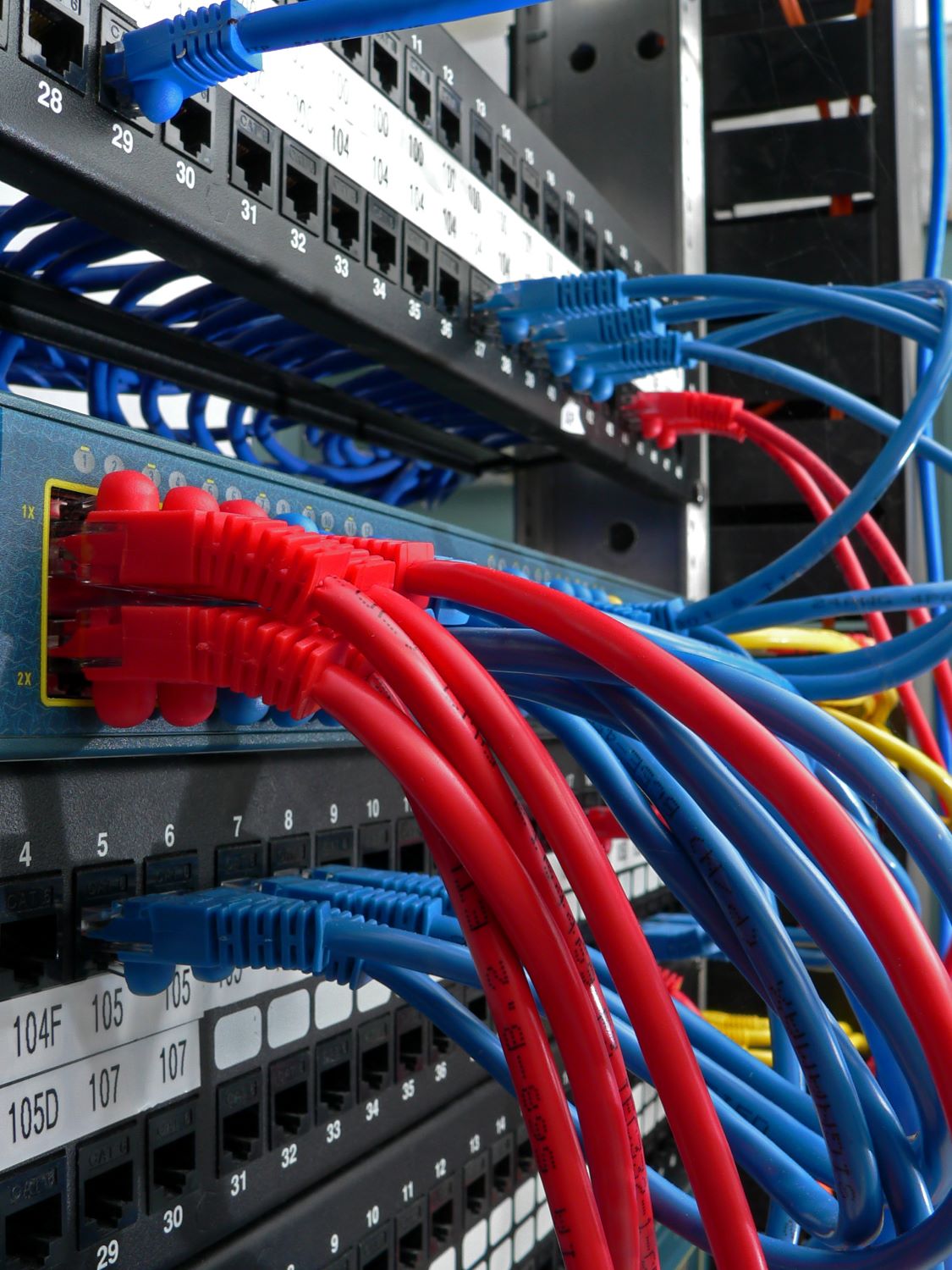 In the case of the fixed communication network, the size of the market will vary significantly between different regions of the country. In densely populated urban areas, such as large towns and cities, the demand for services provided via these networks is likely to be relatively large. Therefore, the MES could be smaller than the size of the market, making competition between network suppliers both possible and desirable. For example, competition may incentivise firms to innovate, become more efficient and reduce costs.
In the case of the fixed communication network, the size of the market will vary significantly between different regions of the country. In densely populated urban areas, such as large towns and cities, the demand for services provided via these networks is likely to be relatively large. Therefore, the MES could be smaller than the size of the market, making competition between network suppliers both possible and desirable. For example, competition may incentivise firms to innovate, become more efficient and reduce costs.
Research undertaken for the government by the consultancy business, Frontier Economics, found that at least a third of UK households live in areas where competition between three or more different networks is economically desirable.
By contrast, in more sparsely populated rural areas, demand for the services provided by these networks will be smaller. The fixed costs per household of installing the network over longer distances will also be larger. Therefore, the MES is more likely to be greater than the size of the market.
The same research undertaken by Frontier Economics found that around 10 per cent of households live in areas where the fixed communication network is a natural monopoly. The demand and cost conditions for another 10 per cent of households meant it is not commercially viable to have any suppliers.
Therefore, policies towards the promotion of competition, regulation, and government support for the fixed communication network might have to be adjusted depending on the specific demand and cost conditions in a particular region.
Articles
Review
Questions
- Explain the difference between fixed and wireless communication networks.
- Draw a diagram to illustrate a profit-maximising natural monopoly. Outline some of the implications for allocative efficiency.
- Discuss some of the issues with regulating natural monopolies, paying particular attention to price regulation.
- The term ‘overbuild’ is often used to describe a situation where more than one fibre broadband network is being constructed in the same place. Some people argue that incumbent network suppliers deliberately choose to use this term to imply that the outcome is harmful for society. Discuss this argument.
- An important part of government policy in this sector has been the Duct and Pole Access Strategy (DPA). Illustrate the impact of this strategy on the average cost curve and the minimum efficient scale of production for fibre broadband networks.
- Draw a diagram to illustrate a region where (a) it is economically viable to have two or more fibre optic broadband network suppliers and (b) where it is commercially unviable to have any broadband network suppliers without government support.
- Some people argue that network competition provides strong incentives for firms to innovate, to become more efficient and reduce costs. Draw a diagram to illustrate this argument.
- Explain why many ‘altnets’ are so opposed to OpenReach’s new ‘Equinox 2’ pricing scheme for its fibre network.
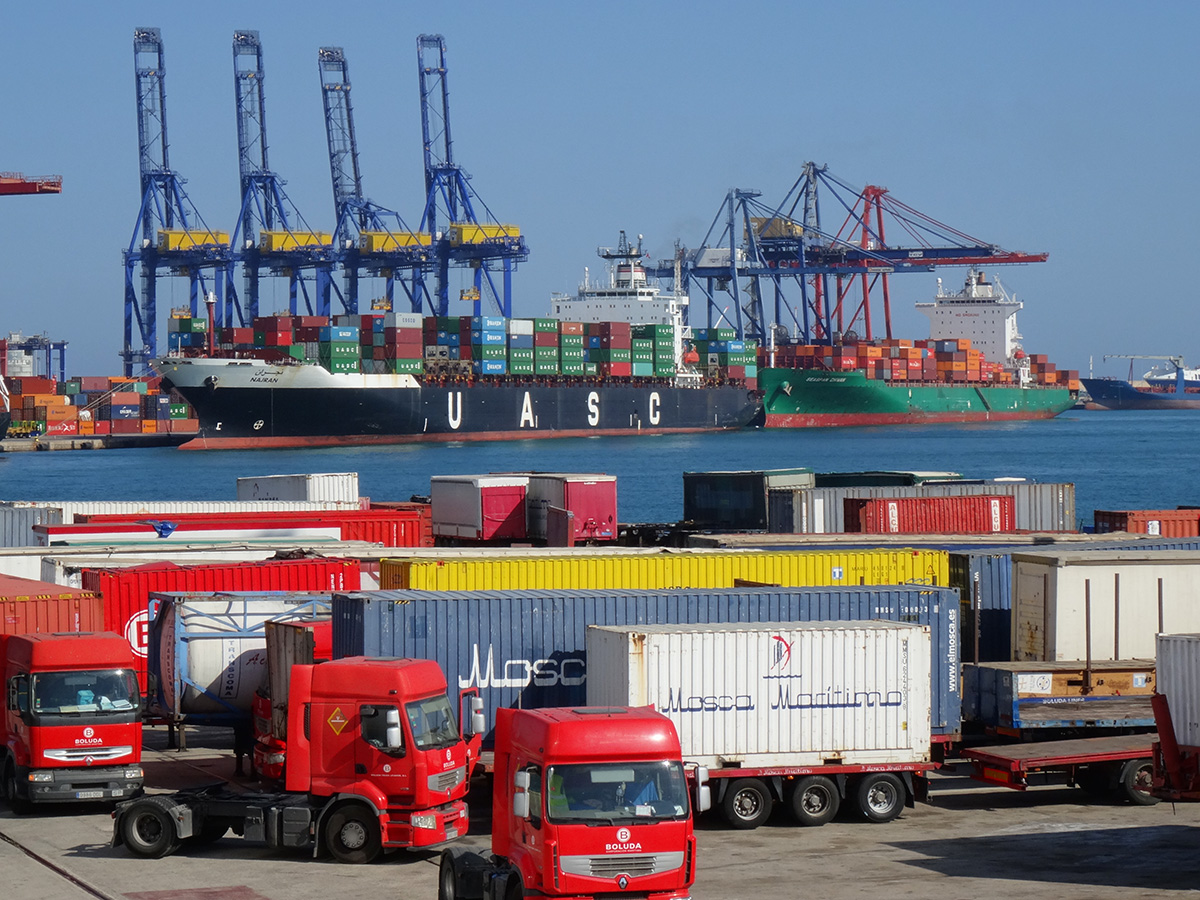 Shipping and supply chains generally have experienced major problems in 2021. The global pandemic disrupted the flow of trade, and the bounce-back in the summer of 2021 saw supply chains stretched as staff shortages and physical capacity limits hit the transport of freight. Ships were held up at ports waiting for unloading and onward transportation. The just-in-time methods of delivery and stock holding were put under considerable strain.
Shipping and supply chains generally have experienced major problems in 2021. The global pandemic disrupted the flow of trade, and the bounce-back in the summer of 2021 saw supply chains stretched as staff shortages and physical capacity limits hit the transport of freight. Ships were held up at ports waiting for unloading and onward transportation. The just-in-time methods of delivery and stock holding were put under considerable strain.
The problems were compounded by the blockage of the Suez canal in March 2021. As the blog, JIT or Illegit stated “When the large container ship, the Ever Given, en route from Malaysia to Felixtowe, was wedged in the Suez canal for six days in March this year, the blockage caused shipping to be backed up. By day six, 367 container ships were waiting to transit the canal. The disruption to supply cost some £730m.”
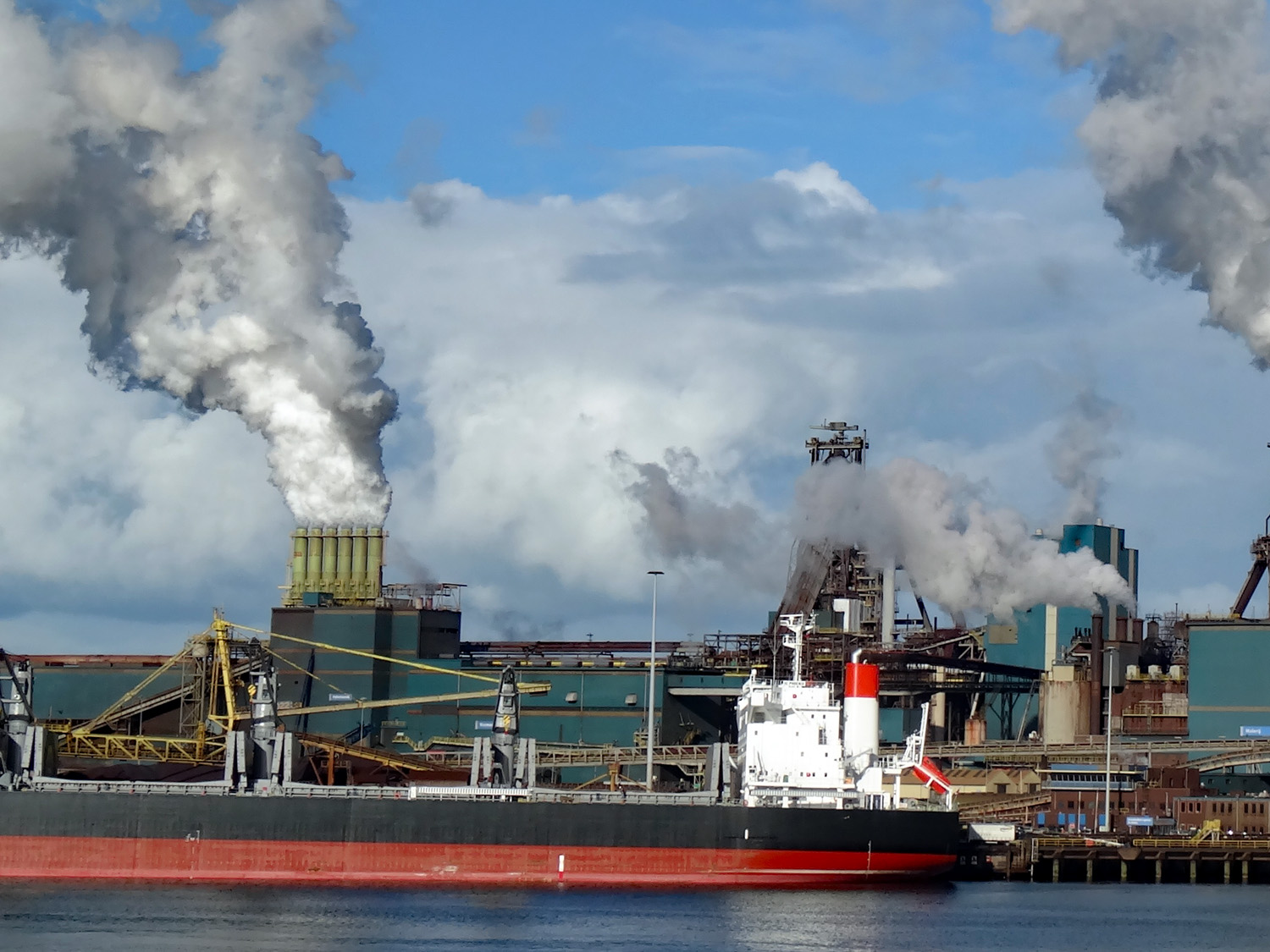 Another major event in 2021 was the Glasgow COP26 climate conference and the growing willingness of countries to commit to decarbonising their economies. But whereas electricity can be generated from renewable sources, and factories and land transport, such as cars, vans and trains, can run on electricity, it is not so easy to decarbonise shipping, especially for long journeys. They cannot plug in to the grid or draw down from overhead cables. They have to carry their own fuel sources with them.
Another major event in 2021 was the Glasgow COP26 climate conference and the growing willingness of countries to commit to decarbonising their economies. But whereas electricity can be generated from renewable sources, and factories and land transport, such as cars, vans and trains, can run on electricity, it is not so easy to decarbonise shipping, especially for long journeys. They cannot plug in to the grid or draw down from overhead cables. They have to carry their own fuel sources with them.
So, have the pandemic and the Ever Given incident exposed weaknesses in the global supply chain and in shipping in particular? And, if so, in what ways is shipping likely to adapt? And will the pressure to decarbonise lead to a radical rethinking of shipping and long-distance trade?
These are some of the issues considered in the podcast linked below. In it, “Shipping strategist Mark Williams tells Helen Lewis how examining the challenge of decarbonising shipping reveals a future which looks radically different to today, in a world where population, oil extraction and economic growth have all peaked, and trade is transformed”.
Listen to the podcast and have a go at the questions below which are based directly on it.
Podcast
Articles
Questions
- Why should we care about the shipping industry?
- What lessons can be drawn from the Ever Given incident?
- What structural changes are needed to make shipping an industry fit for the long-term demands of the global economy?
- Distinguish between just-in-time supply chains and just-in-case supply chains.
- What are ‘reshoring’ and ‘nearshoring’? How have they been driven by a growth in trade barriers?
- What are the implications of reshoring and nearshoring for (a) globalisation and (b) the UK’s trading position post-Brexit?
- What is the contribution of shipping to global greenhouse gas emissions? What other pollutants are emitted from the burning of heavy fuel oil (or ‘bunker fuel’)?
- What levers exist to persuade shipping companies to decarbonise their vessels?
- What alternative ‘green’ fuels are available to power ships?
- What are the difficulties in switching to such fuels?
- What economies of scale are there in shipping?
- How do the ownership patterns in shipping benefit decision making and change in the industry?
- Are ammonia or nuclear power the answer to the decarbonisation of shipping? What are their advantages and disadvantages?
- Why are President Xi’s views on the future of shipping so important?
- How will the decarbonisation of economies affect the demand for shipping?
- What is likely to happen to Chinese demand for iron ore and coking coal over the coming years? What effect will it have on shipping?
- How and by how much is the European Emissions Trading System likely to contribute to the decarbonisation of shipping?
- What is the Sea Cargo Charter? What difference is it likely to make to the decarbonisation of shipping?
- In what ways do cargo ships optimise productivity?
- What impact is slowing population growth, or even no population growth, likely to have on shipping?
 Each week, BBC Radio 4 broadcasts readings from a book serialised in five 15-minute episodes. In the week beginning 18 January 2021, the readings were from English Pastoral: An Inheritance by James Rebanks, a farmer from the Cumbrian fells. His farm is relatively small, covering 185 acres.
Each week, BBC Radio 4 broadcasts readings from a book serialised in five 15-minute episodes. In the week beginning 18 January 2021, the readings were from English Pastoral: An Inheritance by James Rebanks, a farmer from the Cumbrian fells. His farm is relatively small, covering 185 acres.
He has attempted to make it much more sustainable and less intensive, reintroducing traditional Herdwick sheep, having a mixture of cows and sheep rather than just sheep, a greater sub-division of fields, and more natural scrubland, peatbogs and trees. As a result, soil quality has improved and there has been an explosion of biodiversity, with an abundance of wild flowers and insects.
Apart from being an autobiography of his time as a farmer and his attempt to move towards more traditional methods, the book examines broader issues of agricultural sustainability. It looks at the pressures of consumers wanting cheap food, the market power of supermarkets and wholesalers, the cost pressures on farmers pushing them towards monoculture to achieve economies of scale, and the role of the agrichemicals industry promoting fertilisers, feeds and pesticides which bring short-term financial gains to farmers, but which cause longer-term damage to the land and to biodiversity.
Rebanks has gained quite a lot of media attention after the publication of his first book, The Shepherd’s Life, including being one of the guests on Desert Island Discs and the subject of an episode of The Food Programme.
Listen to the Food Programme podcast and try answering the questions, which are all based on the podcast in the order of the points made in the interview.
Podcast
Reviews
Questions
- What are the incentives of an unregulated market for food that result in monoculture and a loss of biodiversity?
- To what extent are consumers responsible for changes in farming methods?
- Have the changes helped the urban poor?
- How is the monopsony power of supermarkets and food wholesalers impacting on food production and the pattern of agriculture?
- There are various (private) economies of scale in food production, but these often involve substantial external costs and long-term private costs too. How does this impact on land use?
- What are some of the limits of technology in increasing crop, meat and dairy yields?
- Will more recent changes in the pattern of food consumption help to increase mixed farming and biodiversity?
- Is it ‘rational’ for many farmers to continue with intensive farming with high levels of artificial fertilisers and pesticides?
- Is diversity in farming across farms within a local area a public good? If so, how could such diversity be achieved?
- How can farmers be encouraged to think and act holistically?
- Is there a trade-off between food output and biodiversity?
- What are the dangers in the UK reaching an agricultural trade deal with the USA?
- What are the benefits and costs of encouraging local food markets?
 The Digital Markets Act (DMA) outlines a new regulatory approach that the European Commission (EC) is taking to address concerns over the lack of competition in digital platform markets. The DMA complements existing European Union competition law and officially came into force on 1st November 2022.
The Digital Markets Act (DMA) outlines a new regulatory approach that the European Commission (EC) is taking to address concerns over the lack of competition in digital platform markets. The DMA complements existing European Union competition law and officially came into force on 1st November 2022. Once a business has been designated as a gatekeeper for one or more CPS, the DMA imposes a set of rules on its future conduct. Some of these rules refer to conduct that the business must follow, while others refer to types of behaviour that are prohibited. The EC sometimes refer to these rules as a list of “do’s” and “don’ts”.
Once a business has been designated as a gatekeeper for one or more CPS, the DMA imposes a set of rules on its future conduct. Some of these rules refer to conduct that the business must follow, while others refer to types of behaviour that are prohibited. The EC sometimes refer to these rules as a list of “do’s” and “don’ts”. Apple submitted its first compliance report on 7 March 2024. It was far less extensive than those completed by other designated gatekeepers and adopted a very different tone: it directly challenged the EC’s view that the DMA rules would have a positive impact on consumer welfare.
Apple submitted its first compliance report on 7 March 2024. It was far less extensive than those completed by other designated gatekeepers and adopted a very different tone: it directly challenged the EC’s view that the DMA rules would have a positive impact on consumer welfare. The first decision included a set of measures that Apple must take to improve the interoperability of connected devices produced by other businesses with the iOS. The EC stated that:
The first decision included a set of measures that Apple must take to improve the interoperability of connected devices produced by other businesses with the iOS. The EC stated that: Can the EU curb tech giants’ power?
Can the EU curb tech giants’ power? In September 2023, UK mobile phone network operators Vodafone and Three (owned by CK Hutchinson) announced their intention to merge. At the time, in terms of total revenue from the supply of mobile phone services to consumers, Vodafone and Three had market shares of 23% and 12%, respectively.
In September 2023, UK mobile phone network operators Vodafone and Three (owned by CK Hutchinson) announced their intention to merge. At the time, in terms of total revenue from the supply of mobile phone services to consumers, Vodafone and Three had market shares of 23% and 12%, respectively. The CMAs phase 1 investigation raised several concerns with the merger (see fifth CMA link below).
The CMAs phase 1 investigation raised several concerns with the merger (see fifth CMA link below). However, during the phase 2 investigation, the merging parties put forward various efficiency justifications for the merger. They argued that the merger would provide them with much needed scale and investment capacity to improve their network and roll-out 5G technology. The CMA recognised these claims but questioned the merging parties’ incentives to go through with the investment once the merger was approved. Furthermore, it was concerned that if they did invest, this would be funded by raising the prices charged to consumers.
However, during the phase 2 investigation, the merging parties put forward various efficiency justifications for the merger. They argued that the merger would provide them with much needed scale and investment capacity to improve their network and roll-out 5G technology. The CMA recognised these claims but questioned the merging parties’ incentives to go through with the investment once the merger was approved. Furthermore, it was concerned that if they did invest, this would be funded by raising the prices charged to consumers.  Finally, over the next eight years, the merged entity must deliver the network upgrade plans that it claimed the merger would allow. The CMA believes that in the long run this network development would significantly boost competition between the three remaining mobile network operators.
Finally, over the next eight years, the merged entity must deliver the network upgrade plans that it claimed the merger would allow. The CMA believes that in the long run this network development would significantly boost competition between the three remaining mobile network operators.  One explanation is that the market has fundamentally changed over time. The margins for network operators have declined, network usage has grown and there has been a lack of investment in expensive 5G technology. This would certainly fit with the CMA’s desire to use the remedies to facilitate network investment.
One explanation is that the market has fundamentally changed over time. The margins for network operators have declined, network usage has grown and there has been a lack of investment in expensive 5G technology. This would certainly fit with the CMA’s desire to use the remedies to facilitate network investment.  You may have recently noticed construction workers from different businesses digging up the roads/pavements near where you live. You may also have noticed them laying fibre optic cables. Why has this been happening? Does it make economic sense for different companies to dig up the same stretch of pavement and lay similar cables next to one another?
You may have recently noticed construction workers from different businesses digging up the roads/pavements near where you live. You may also have noticed them laying fibre optic cables. Why has this been happening? Does it make economic sense for different companies to dig up the same stretch of pavement and lay similar cables next to one another? Recent government policy has tried to encourage and incentivise the replacement of the copper wire network with one that is fully fibre. This is often referred to as Fibre to the Premises (FTTP) or Fibre to the Home (FTTH). A fixed network of fully fibre broadband enables much faster download speeds and many argue that it is vital for the future competitiveness of the UK economy.
Recent government policy has tried to encourage and incentivise the replacement of the copper wire network with one that is fully fibre. This is often referred to as Fibre to the Premises (FTTP) or Fibre to the Home (FTTH). A fixed network of fully fibre broadband enables much faster download speeds and many argue that it is vital for the future competitiveness of the UK economy. In the case of the fixed communication network, the size of the market will vary significantly between different regions of the country. In densely populated urban areas, such as large towns and cities, the demand for services provided via these networks is likely to be relatively large. Therefore, the MES could be smaller than the size of the market, making competition between network suppliers both possible and desirable. For example, competition may incentivise firms to innovate, become more efficient and reduce costs.
In the case of the fixed communication network, the size of the market will vary significantly between different regions of the country. In densely populated urban areas, such as large towns and cities, the demand for services provided via these networks is likely to be relatively large. Therefore, the MES could be smaller than the size of the market, making competition between network suppliers both possible and desirable. For example, competition may incentivise firms to innovate, become more efficient and reduce costs.  Shipping and supply chains generally have experienced major problems in 2021. The global pandemic disrupted the flow of trade, and the bounce-back in the summer of 2021 saw supply chains stretched as staff shortages and physical capacity limits hit the transport of freight. Ships were held up at ports waiting for unloading and onward transportation. The just-in-time methods of delivery and stock holding were put under considerable strain.
Shipping and supply chains generally have experienced major problems in 2021. The global pandemic disrupted the flow of trade, and the bounce-back in the summer of 2021 saw supply chains stretched as staff shortages and physical capacity limits hit the transport of freight. Ships were held up at ports waiting for unloading and onward transportation. The just-in-time methods of delivery and stock holding were put under considerable strain. Another major event in 2021 was the Glasgow COP26 climate conference and the growing willingness of countries to commit to decarbonising their economies. But whereas electricity can be generated from renewable sources, and factories and land transport, such as cars, vans and trains, can run on electricity, it is not so easy to decarbonise shipping, especially for long journeys. They cannot plug in to the grid or draw down from overhead cables. They have to carry their own fuel sources with them.
Another major event in 2021 was the Glasgow COP26 climate conference and the growing willingness of countries to commit to decarbonising their economies. But whereas electricity can be generated from renewable sources, and factories and land transport, such as cars, vans and trains, can run on electricity, it is not so easy to decarbonise shipping, especially for long journeys. They cannot plug in to the grid or draw down from overhead cables. They have to carry their own fuel sources with them. Each week, BBC Radio 4 broadcasts readings from a book serialised in five 15-minute episodes. In the week beginning 18 January 2021,
Each week, BBC Radio 4 broadcasts readings from a book serialised in five 15-minute episodes. In the week beginning 18 January 2021,